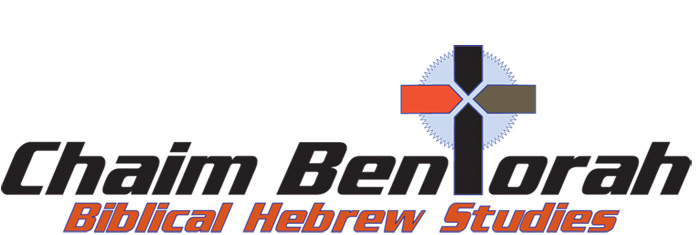HEBREW WORD STUDY – REDEMPTION OF THE FIRSTBORN – PIDYON HABEN פדיון הבן
Exodus 13:2: “Sanctify unto me all the firstborn, whatsoever openeth the womb among the children of Israel, [both] of man and of the beast: it [is] mine.”
Luke 2:22-23: “And when the days of her purification according to the law of Moses were accomplished, they brought him to Jerusalem, to present [him] to the Lord; (23) (As it is written in the law of the Lord, Every male that openeth the womb shall be called holy to the Lord;) (24) And to offer a sacrifice according to that which is said in the law of the Lord, A pair of turtledoves, or two young pigeons.”
 It is Christmas and preachers are scrabbling to share something different in the Christmas story. They usually settle on the story of Anna and Simeon where they tell this beautiful story of Jesus being brought to Jerusalem to be blessed by Simeon. I have heard this story many times but no one bothers to explain the Jewish tradition behind this interlude to the Christmas story before Mary and Joseph flee to Egypt. In fact, they leave out a very important point to this Christmas story that I never heard explained.
It is Christmas and preachers are scrabbling to share something different in the Christmas story. They usually settle on the story of Anna and Simeon where they tell this beautiful story of Jesus being brought to Jerusalem to be blessed by Simeon. I have heard this story many times but no one bothers to explain the Jewish tradition behind this interlude to the Christmas story before Mary and Joseph flee to Egypt. In fact, they leave out a very important point to this Christmas story that I never heard explained.
After the days of purification ended Mary and Joseph brought the baby to Jerusalem to present Jesus to the Lord. What was that all about and I thought they were afraid to go to Jerusalem because Herod was ready to kill the child. This ritual that took place in the temple in Jerusalem is called Pidyon Haben or the redemption of the son. This is a ceremony where the father of the firstborn male redeems his son from the priesthood by giving five silver coins to a priest who is a direct descendent of Aaron thirty days after the baby’s birth. This would ceremonially pass on the eldest’s duties as a priest to a Levite priest. After studying the Talmud, Mishnah, Midrash, Targums, and other Jewish Literature throughout the years I have come to understand things that it seems Christians are totally unaware of with regard to the nativity. For one thing, how could Jesus who was from the tribe of Judah be a priest? Ever wonder that? Jewish teaching explains it perfectly.
First, the picture of the nativity is of a wooden manger or feeding trough used as a crib for baby Jesus. I mean really? I am no farmer but I know from my Uncle Otto who was a farmer that wooded troughs would not last very long as farm animals tend to gnaw at anything made of wood that they can get their teeth around. If Jesus was placed in a feeding trough it would have had to be made of stone. Secondly, according to Jewish law a pregnant woman, especially one that is about to give birth to a child is to never gaze upon any unclean animal. I mean what kind of nativity scene do we have without a camel, yet camels are not kosher and would not be allowed insight of the mother or baby.
A Jewish woman who has had a baby must say a blessing in the presence of ten relatives or lacking ten relatives in the presence of ten Jewish males. Now where are you going to find ten Jewish men to listen to Mary’s blessing or prayer? Ah, yes, shepherds. But shepherds are usually loners, it is very doubtful you will find ten shepherds unless you look at the Talmud in Bab Kamma 80a which tells us that just a few feet bordering Bethlehem is a field owned by the Levites/Temple to raise and care for the sacrificial lambs. These lambs had to be without blemish or spot and received tender loving care throughout their lives. From the birth of the lamb, they were spoiled rotten. They were wrapped in fine linen (like swaddling clothes) to protect them from any blemish or spot and fed a special diet from a stone feeding trough. The lambs were birthed in a special tower called a migdal-eder tower of the flock. Micah 4:8: “And thou, O tower of the flock, the stronghold of the daughter of Zion.”
Am I being too romantic to suggest that maybe Jesus was not born in a barn or nativity scene but in a tower where the sacrificial lambs were born and wrapped in the swaddling linen of the sacrificial lambs? The shepherds attending this scene were summoned by an angel announcing the birth of the Messiah, the final sacrificial lamb, and likely included ten shepherds.
Would you like Chaim Bentorah as your personal Hebrew teacher?
|
|
Oh, one other thing, the father is forbidden to be in the same room during the birthing process, so who was there to assist in the birth. Possibly the first-century priestly veterinarians who attending the birthing of numerous sacrificial lambs.
A woman enters a period of impurity or Niddah for seven days after a male child is born and fourteen days after a female child. It was believed a female is closer to God than a male so they need a longer time for purification.
Then after 30 days, the new parents are to appear before a priest in the temple for the pidyan haden or the redemption of the firstborn male child. According to Exodus, that child belongs to God and the father is to redeem him with five pieces of silver. Only Scripture says that Mary and Joseph offered two turtle doves and two pigeons, the offering of a poor person. But wait, the redemptive price of 5 pieces of silver was meant to redeem the eldest son from priestly duties. This law was enacted prior to the establishment of the priestly lines. Up to that point, the eldest took the role of a priest. Once the Aaronic line was established this ritual of pidyan haden was performed before a Levi priest who would symbolically assume the child’s duties as priest and the five pieces of silver would redeem him from his obligation. This ritual serves as a reminder that God is the owner of all things including the best and first of all that you have. This is what the Scripture in Exodus means when the eldest belongs to God. Just as Jephthah’s vow said he would give to the Lord or offer up as a burnt offer who or whatever walked through his door. Give to the Lord was a phrase meaning the person would serve in the temple or tabernacle for the rest of their lives. Jephthah’s daughter walked through and he was bound to give her to the Lord, that is to serve in the temple all her life like Anna in Luke 2 or Samuel in I Samuel.
That is how Jesus, who was not a member of the priestly line could be a priest. Mary and Joseph were not going to redeem him with 5 pieces of silver they were going to consecrate him with the sacrifice of the doves and pigeons. Thanks to Mary, Joesph, and a Godly priest named Simeon Jesus was not redeemed for His duties as a priest but because of our priest but not just a priest. But our High Priest.
Hi there! Thank you for reading this Daily Word Study. Can I ask a favor? Share this Daily Word Study with your friends on Facebook and Twitter by clicking one of the icons below.
Thanks & Blessings, it means a lot to me!







Thank you for bringing us background and reality to the Christian tradition.
Merry Christmas to you and Laura and all at Chaim Bentorah Ministries.
I got lost in understanding with the last paragraph. Are there”typos” in the last paragraph ?
“not redeemed for His duties as a priest but because of our priest but not just a priest….”
I’m not able to understand what you are saying.
I guess it is not that clear. What i wanted to say was the unless they first born male is redeemed he must spend his life serving God as the Levites did in the temple as a priest. But Mary and Joseph did not redeem their first born male. – Jesus so he still assumed the role of a priest but was to become our high priest when he offered Himself as a sacrifice. Chaim
This makes sense
Sanctify to me all the firstborn said God. He did not say male or female. Every household shall mourn, the children in some of them must have been all female. Moses interpreted this as male only, based on the instruction that the Passover lamb had to be male, I think. Jephthah’s daughter did not serve in the Temple, she was offered up as a holocaust. The sons of Israel can be understood as meaning the children of Israel. Get ‘ The Gospel As Revealed To Me ‘ by Maria Valtorta as a Christmas gift. You will find it fascinating.
My Dear Dear Teacher , do you also then believe that Jesus was slaughtered like those lambs from the tower and not on a wooden cross ? Who’s to say that God approved of this tower . Think of the “Tower of Babel” and who’s to say that God didn’t disapprove of lambs forced to be perfect and wanted lambs that lived
normally and were still perfect just as Jesus lived and was still perfect .
Now Jesus said that Salvation will come from the Jews . So therefore Jesus met all the requirements of God for the Jews including being presented in Temple . So we will know that He was a Jew He did everything a devout Jewish Person would do .
Now as for the birth of Jesus there would have women in the inn who would have attended to the birth of the Baby and since many of the people in Bethlehem at that time were from the tribe of Judah and they were considered related. It would have been easy to find ten men .
There is much symbolism in the Nativity story . The wood of the manger is like the wood of the cross in that they both represent the Tree of life with Jesus as The Sweet Fruit upon that Tree.
Merry Christmas to all and may God Bless All His People !!
This is very interesting, thank you.
The Jewish texts you refer to often, could you please talk about them, their history and how you use them? How do Jews view these books compared to the Bible etc. or please send me a link to where you may have already spoken about them.
Thank you for your teachings.